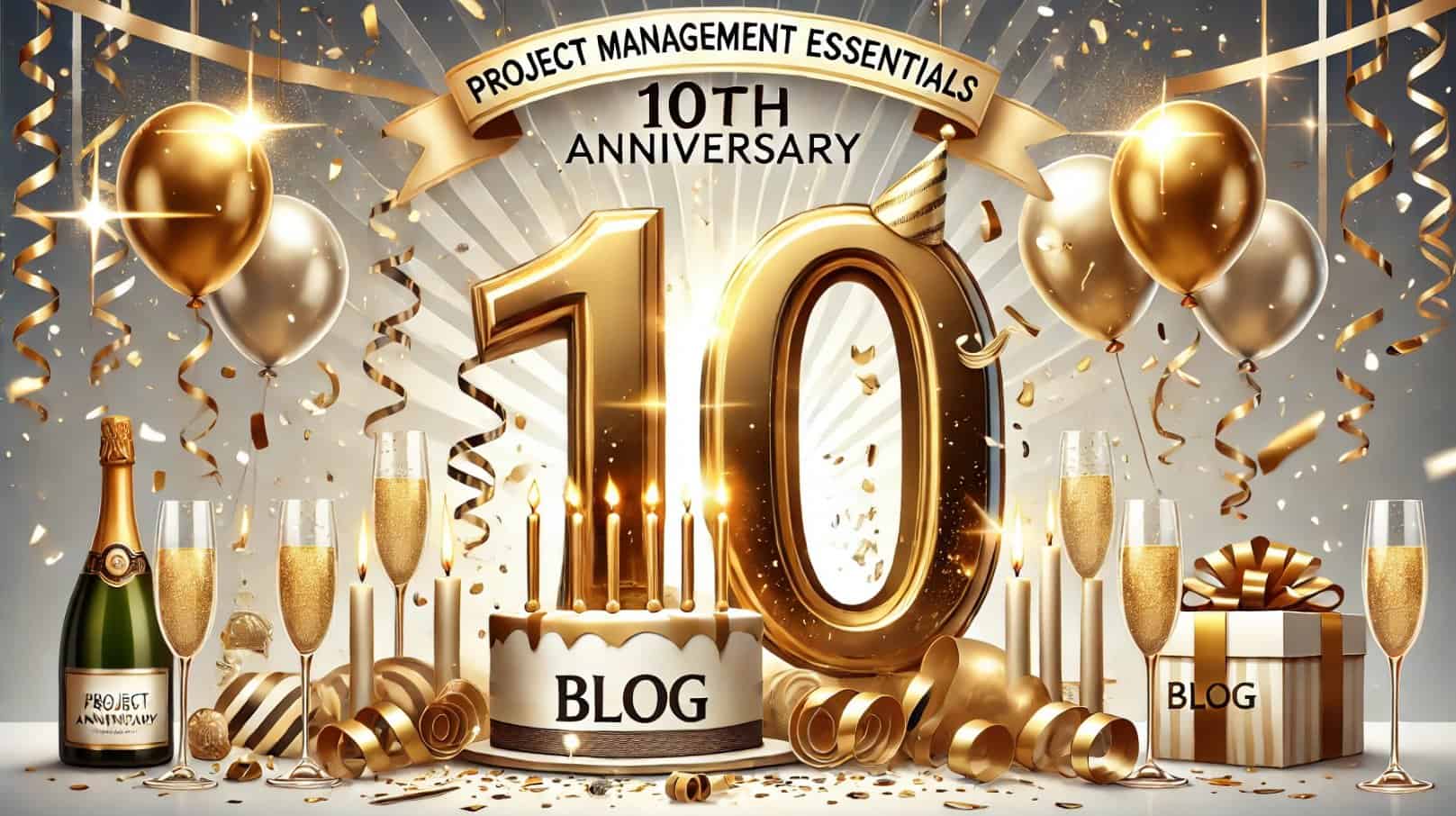
I authored my first project management article 10 years ago. A mentor recommended I start writing to launch my transition from managing project organizations to teaching. Writing those early articles was challenging. Reducing complex ideas into writing is a skill requiring practice and discipline.
I did not anticipate having so much to say. However, project management is dynamic and continues to evolve and innovate. To mark my 120th blog milestone, I will reflect on themes from the past decade and contemplate what lies ahead.
Evolving the Profession
Ten years ago, traditional practices were firmly entrenched in the canon. The PMBOK® 5th Edition was new and defined 47 processes with their inputs, tools, and outputs that aspiring PMPs® judiciously memorized to pass the PMP® exam.
The PMBOK® 6th Edition was published in 2017. The number of processes increased to 49, and Agile was added to the “body of knowledge.” Each chapter included an “Agile Considerations” section, and the Agile Practice Guide® was introduced. Including Agile was an appreciated albeit bolted-on afterthought.
A seismic shift occurred in 2019 when PMI announced that a quarter of the PMP test questions would be Agile. Two years later, the PMBOK® 7th Edition moved the profession from a process to a principles-based perspective. The principles provided guidance but were vague and lacked tactical practices. PMI reintroduced the processes when it published the “Process Groups: A Practical Guide” in 2022.
PMI announced earlier this year that it was beginning to work on the next version of the PMBOK®. Deliberations on this edition are tightly held. I expect the principles will be refined, and a greater emphasis will be placed on the Hybrid approach.
The Arc of Agility
Agile was on its upward arc in 2014. Traditional industries and companies were embarking on agile transformations. Second-wave frameworks such as Scaled Agile (SAFe), DevOps, and Disciplined Agile were propagating.
It was an exciting time. People were rushing to earn new certifications. There were intense discussions about frameworks, tools, practices, and roles. Some conversations were less productive than others.
I was leading a large project management organization at the time and embraced agile as a key to future success. My project managers were cross-trained as scrum masters to help transform their development teams. Unfortunately, it was not that simple. Organizational politics and turf wars mired progress.
Today, many articles and blog posts declare that Agile is dead. Large companies are firing their agile staff, and agile training is down. Thought leaders talk about reimagining and restarting agile. I think it is premature to write Agile’s obituary.
DevOps practices have been widely adopted, but they garner much less attention. Disciplined Agile has not had its breakthrough moment. SAFe has come to dominate the enterprise space despite its detractors.
People Matter
The magic of projects is organizing many people to create something that a single person could not do alone. Despite experiential knowledge and research data, the profession still focuses on practices and frameworks over leadership and management. An enduring lesson is that people matter—they are the key to project success!
The leading causes of project success and failure are mirror images: stakeholder engagement, management engagement, and good requirements. Engagement ensures the right products are built and delivered—assuming we know what our customers want often leads to failure. Management support Is critical but is not a given.
Over the years, I have written several articles on stakeholder management. In my classes and consulting practice, I encourage people to identify and thoroughly assess their stakeholders. This exercise always yields valuable insights. Often, we overlook people and fail to invest adequately in important relationships.
Our teams should be a source of creativity and innovation. Despite decades of emphasizing the value of knowledge workers, we often default to Taylorism. These traditional practices focus on control over collaboration, and process over people. To succeed, we must promote collaboration and innovation to unlock our team’s creative energies. Realizing that magic requires a healthy team culture and leadership support.
Where We Work
Distributed, hybrid, and remote work is nothing new. I worked on distributed teams in the 1990s and started working from home two days a week in the early 2000s. COVID produced an unprecedented global experiment on remote and hybrid work.
While working from home is more convenient, a growing body of research indicates that productivity has suffered. Even Zoom’s CEO recognized the platform limited innovation and valuable debate. Recent data shows a marked decline in job postings for remote and hybrid work.
The issue is not where we work. The challenge is creating collaborative, creative, and innovative environments. There are no silver-bullet solutions. Successful communication in the ever-evolving digital age requires intentionality and adaptation. Virtual meetings are inherently different. Creating trusting relationships with colleagues and managers requires an investment in engagement.
Are We Better?
I published Successful Projects: What We Really Know in 2016. The Standish Group’s Chaos Report found that only 30% of projects between 1994 and 2016 were deemed successful. Updated information from the 2020 Report showed little improvement. The Project Management Institute’s annual Pulse of the Profession shows similar trends.
There were some bright spots. Small projects were more successful than large projects. Agile outperformed waterfall. Stakeholder engagement is critical. Maturity matters. These same trends persist today.
So are we better? On average, not really. However, if we practice our tradecraft and do what works, we can be successful.
What’s Next?
AI and machine learning offer tremendous opportunities. At a recent Agile conference, several speakers recited the same theme, “AI will not replace you. Someone who knows how to use AI will!” We all need to embrace this change.
Hybrid project management has been gaining prominence. In 2014, the phrase did not exist. In 2019, PMI declared that a quarter of PMP test questions would be focused on Hybrid. Today, it has surpassed agile as the second most common project approach. However, Hybrid is still not well-defined and is an emerging concept. Is Hybrid just a new shiny object? Only time will tell.
Our quest for the holy grail will continue to be unsuccessful. Methodologies, frameworks, tools, and practices are enablers, but they are not the solution. The magic of successful projects is the people….”Individuals and interactions over processes and tools.”
I spent an afternoon with an old friend who is an acclaimed portrait artist. He lamented that mastery is no longer valued. People want shortcuts and quick solutions. The same can be said for our profession. Great project managers spend years honing their skills through practice and experience, which is hard to shortcut.
© 2024, Alan Zucker; Project Management Essentials, LLC
See related articles:
- Advanced Stakeholder Modeling
- Don’t Blame Agile for Bad Agile
- Hybrid Project Management: Part 2, What Changes?
- Know Your Stakeholders
- Stakeholder Management: A Key to Project Success
- Taylorism: Then & Now
- The Evolving Arc of Management
To learn more about our training and consulting services or subscribe to our newsletter, visit our website: http://www.pmessentials.us/.
Image generated by ChatGPT

